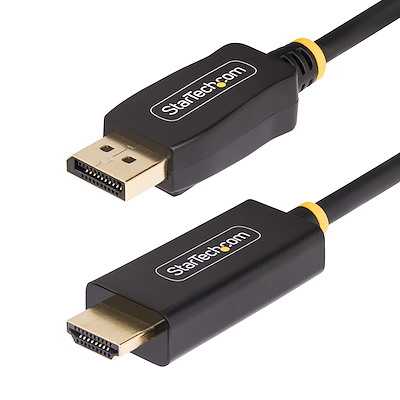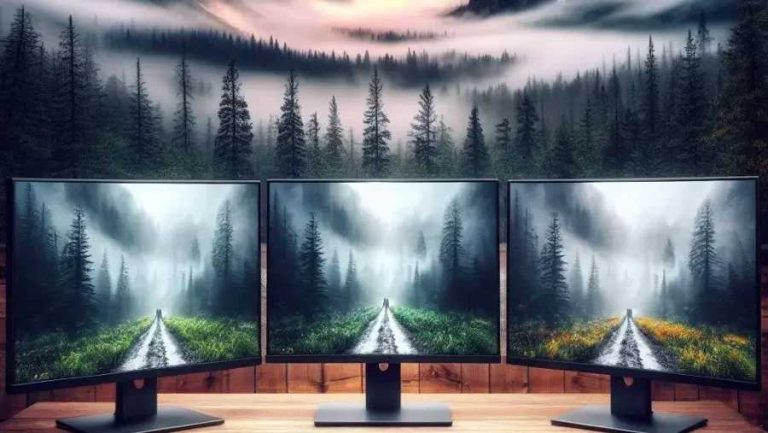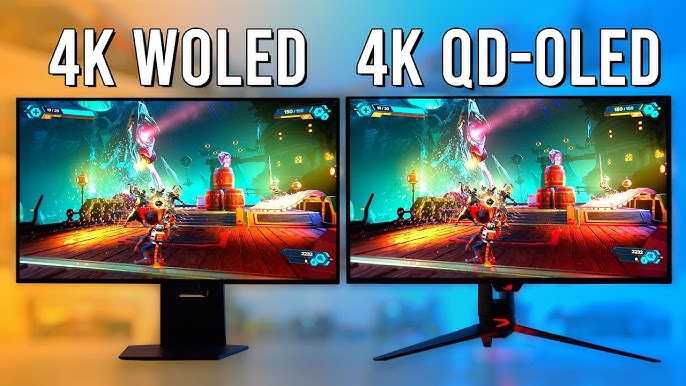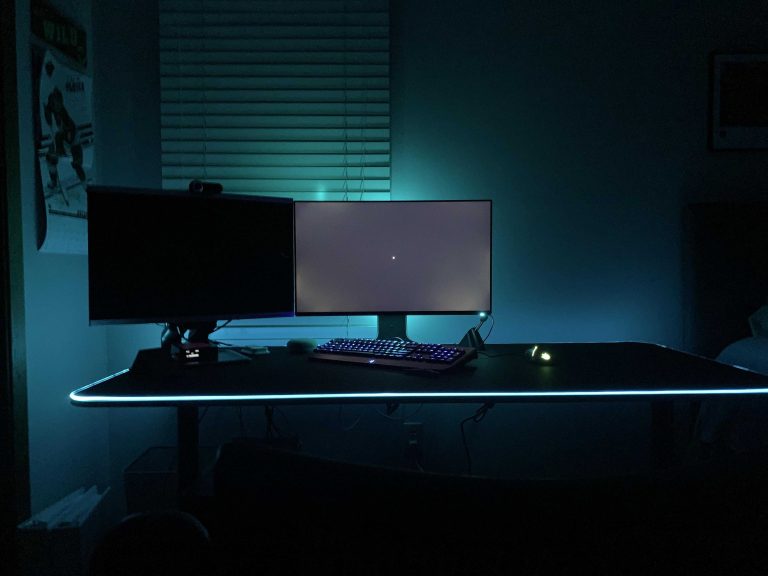To connect an HDR monitor with HDMI, simply ensure your HDMI cable is version 2.0 or higher, plug one end into your computer or device and the other into the monitor, then select the correct HDMI input. Make sure your device supports HDR and that your monitor is set to HDR mode for the best viewing experience. Adjust display settings if needed to enable HDR features on your device.
Connecting an HDR monitor via HDMI might sound tricky, but it’s quite straightforward once you have the right equipment and settings. HDR (High Dynamic Range) significantly enhances your visual experience by delivering brighter whites, deeper blacks, and a wider color spectrum. The key is to use an HDMI cable that supports HDMI 2.0 or newer, as older versions may not transmit HDR signals properly. Once everything is properly connected and configured, you’ll enjoy vibrant, lifelike images whether you’re gaming, streaming, or working on creative projects. Don’t worry — with a few simple steps, you’ll be set up in no time!
How to Connect HDR Monitor with HDMI: A Complete Guide
Understanding HDR and Why It Matters
HDR, or High Dynamic Range, enhances your viewing experience by providing brighter whites, darker blacks, and more vivid colors. This technology makes images look more realistic and detailed. Connecting an HDR monitor correctly ensures you enjoy these benefits without any issues.
Choosing the Right HDMI Cable for HDR Support
To get the best HDR experience, selecting the correct HDMI cable is essential. Not all cables support HDR, so look for HDMI 2.0 or HDMI 2.1 cables. These versions support higher bandwidths needed for HDR content.
- HDMI 2.0 cables support up to 18 Gbps, enough for 4K HDR at 60Hz.
- HDMI 2.1 cables support up to 48 Gbps, suitable for 8K HDR and higher refresh rates.
Checking Your Devices for Compatibility
Before connecting, verify that your monitor, graphics card, and HDMI cable support HDR. Many new devices are compatible, but some older hardware might not display HDR properly.
- Ensure your monitor explicitly states HDR support.
- Update your graphics card drivers to the latest version for enhanced compatibility.
Connecting Your HDR Monitor with HDMI Step by Step
Step 1: Power Off Your Devices
Begin by turning off your computer and monitor. This prevents any electrical issues or damage during connection.
Step 2: Use the Correct HDMI Cable
Pick an HDMI cable rated for HDR, preferably HDMI 2.0 or higher. Insert one end into your computer’s HDMI port and the other into your monitor’s HDMI input.
Step 3: Power On and Configure Your Devices
Turn on your monitor first to ensure it’s ready for connection. Then, power on your computer. Your computer should recognize the HDR monitor automatically.
Step 4: Configure Display Settings
Access your computer’s display settings to optimize HDR performance. On Windows, go to Settings > System > Display. On Mac, open System Preferences > Displays.
Configuring HDR Settings for Optimal Performance
Windows Users
Ensure HDR is enabled in Windows settings. Under Display settings, toggle the “Use HDR” option to On. Adjust the brightness and color settings for the best visual quality.
Mac Users
HDR options are typically available when using compatible macOS versions. Access Display preferences and select the HDR-compatible monitor. Adjust color profiles for enhanced quality.
Troubleshooting Common Issues
No Signal or Black Screen
Check that your HDMI cable is securely plugged in and supports HDR. Ensure your monitor is set to the correct input source.
Colors Look Dull or Incorrect
Verify that HDR is enabled in display settings. You may need to update graphics drivers or check monitor color settings.
Low Brightness or Poor Contrast
Adjust monitor settings directly on the display. Also, confirm your graphics card driver is current for optimal HDR performance.
Advanced Tips for Better HDR Connection
Use Proper Display Settings
Set your monitor to the native resolution and refresh rate supported for HDR. Common options include 4K at 60Hz or higher, depending on hardware.
Enable HDR in Your Graphics Card Control Panel
Some graphics cards have dedicated control panels where you can fine-tune HDR options and color profiles for precise adjustments.
Update Firmware and Drivers Regularly
Manufacturers often release updates fixing bugs and improving HDR support. Keep all device firmware and drivers current.
Related Topics
Explore other related topics such as selecting the best HDR monitors, understanding HDMI version differences, and using color calibration tools to enhance your viewing experience.
Choosing the Right HDR Monitor
Look for features like high brightness levels, wide color gamut, and support for HDR standards like HDR10 and Dolby Vision.
Understanding HDMI Versions
Knowing the differences between HDMI 2.0 and HDMI 2.1 helps in selecting cables and devices that deliver the best HDR quality.
Calibrating Your Display
Use color calibration tools and settings to ensure your HDR display shows images accurately and vibrantly.
Connecting an HDR monitor with HDMI involves selecting the right cable, verifying device compatibility, and fine-tuning display settings. Following these steps ensures you get the best picture quality and enjoy the vibrant visuals HDR offers. Proper setup and occasional adjustments can make your viewing experience more immersive and visually stunning.
HDMI vs DisplayPort for PC Gaming
Frequently Asked Questions
What cables do I need to connect my HDR monitor with HDMI?
To connect your HDR monitor via HDMI, you need an HDMI 2.0 or higher cable that supports HDR content. Ensure the cable is of good quality to handle high bandwidth for 4K HDR signals. Using a cable that meets these specifications guarantees optimal performance and image quality.
How can I ensure my graphics card supports HDR over HDMI?
Check your graphics card specifications to confirm it supports HDMI 2.0 or later with HDR capability. Update your graphics drivers to the latest version to enable HDR support. If your GPU and drivers support HDR, your system should automatically recognize HDR signals when connected properly.
Why isn’t my HDR monitor displaying HDR content even after connecting via HDMI?
Verify that your input source is set to the correct HDMI port and that your monitor’s firmware is up to date. Additionally, ensure that your device’s display settings are configured for HDR. Sometimes, enabling HDR in your operating system’s display settings or graphics control panel resolves display issues.
Can I use adapters to connect my HDR monitor to different devices over HDMI?
Yes, you can use HDMI adapters or converters, but ensure they support HDR and the required HDMI version. Some adapters may not support HDR or high bandwidth, which can limit display quality. Always choose adapters rated for 4K HDR to maintain optimal image quality.
What settings should I check on my monitor to optimize HDR performance via HDMI?
Access your monitor’s on-screen display menu and verify that HDR mode is enabled. Adjust any related settings, such as picture mode or color profile, to support HDR content. Also, ensure your operating system’s display settings are configured correctly for HDR output for the best viewing experience.
Final Thoughts
Connecting an HDR monitor with HDMI is straightforward. First, ensure your monitor and device both support HDMI 2.0 or higher for optimal HDR performance. Use a high-quality HDMI cable to connect your device’s HDMI port to the monitor. Adjust your device settings to enable HDR output and select the correct input source on your monitor.
In conclusion, understanding how to connect HDR monitor with HDMI helps enhance your visual experience. Properly configuring your setup ensures vivid, immersive images. Follow these steps to enjoy HDR content seamlessly.

I follow the latest trends in smart devices, portable monitors, and gaming accessories. My goal is to provide real-world insights that help readers make smarter tech decisions.





